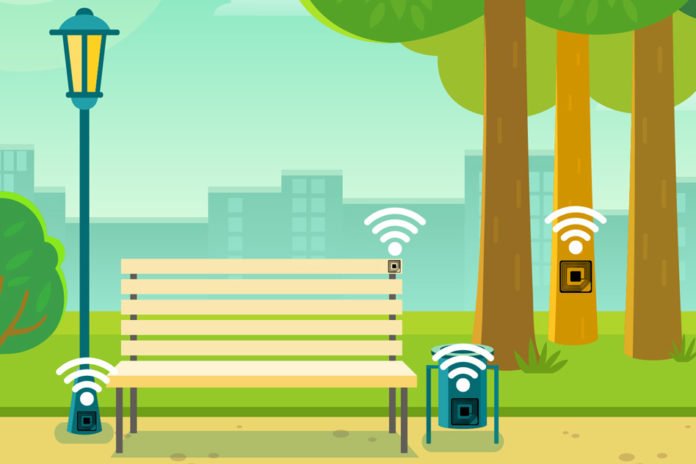Using RFID, many retailers and manufacturers track their products. They also use radio-frequency identification tags that come in paper-based labels outfitted with a simple antenna and memory chip. RFID labels go about as smart signatures, transmitting data to a radio-frequency reader about a given item’s identity, state, or area.
Now, engineers at the MIT lab have pushed the technology toward a new function: Sensing. They have built up another ultra-high-frequency, or UHF, RFID tag-sensor arrangement that detects spikes in glucose and remotely transmits this data. Later on, the group intends to tailor the tag to detect synthetic chemicals and gases in the environment, for example, carbon monoxide.
Sai Nithin Reddy Kantareddy, a graduate student in MIT’s Department of Mechanical Engineering, said, “People are looking toward more applications like sensing to get more value out of the existing RFID infrastructure. Imagine creating thousands of these inexpensive RFID tag sensors which you can just slap onto the walls of an infrastructure or the surrounding objects to detect common gases like carbon monoxide or ammonia, without needing an additional battery. You could deploy these cheaply over a huge network.”
Sanjay Sarma, the Fred Fort Flowers, said, “RFID is the cheapest, lowest-power RF communication protocol out there. When generic RFID chips can be deployed to sense the real world through tricks in the tag, true pervasive sensing can become a reality.”
Scientists have been exploring different approaches to transform detached RFID tags into sensors that can work over long stretches of time without the requirement for batteries or substitutions. These efforts have typically focused on manipulating a tag’s antenna, engineering it so that its electrical properties change in response to certain environmental stimuli.
Therefore, an antenna should reflect radio waves to a reader at a typically extraordinary frequency or signal strength, showing that a specific stimulus has been detected. Scientists earlier designed an RFID tag-antenna that changes how it transmits radio waves in response to the moisture content in the soil. They also fabricated an antenna to sense signs of anemia in blood flowing across an RFID tag.
Sai Nithin Reddy Kantareddy, a graduate student in MIT’s Department of Mechanical Engineering, said, “There are drawbacks to such antenna-centric designs, the main one being “multipath interference,” a confounding effect in which radio waves, even from a single source such as an RFID reader or antenna, can reflect off multiple surfaces.”
“Depending on the environment, radio waves are reflecting off walls and objects before they reflect off the tag, which interferes and creates noise. With antenna-based sensors, there’s more chance you’ll get false positives or negatives, meaning a sensor will tell you it sensed something even if it didn’t because it’s affected by the interference of the radio fields. So it makes antenna-based sensing a little less reliable.”
So, scientists tried another approach where they tried tailoring its memory chip. They acquired off-the-shelf integrated chips that are intended to switch between two diverse power modes: an RF energy-based mode, like completely passive RFIDs, and a local energy-assisted mode, for example, from a battery or capacitor, like semipassive RFID tags.
They worked each chip into an RFID tag with a standard radio-frequency antenna. In a key step, the researchers built a simple circuit around the memory chip, enabling it to switch to a local energy-assisted mode only when it senses certain stimuli. When in this assisted mode (commercially called battery-assisted passive mode, or BAP), the chip emits a new protocol code, distinct from the normal code it transmits when in a passive mode. A reader can then interpret this new code as a signal that a stimulus of interest has been detected.
Kantareddy said, “This chip-based design can create more reliable RFID sensors than antenna-based designs because it essentially separates a tag’s sensing and communication capabilities. In antenna-based sensors, both the chip that stores data and the antenna that transmits data are dependent on the radio waves reflected in the environment. With this new design, a chip does not have to depend on confounding radio waves in order to sense something.”
“We hope reliability in the data will increase. There’s a new protocol code along with the increased signal strength whenever you’re sensing, and there’s less chance for you to confuse when a tag is sensing versus not sensing.”
Rahul Bhattacharya, a research scientist in the group, said, “This approach is interesting because it also solves the problem of information overload that can be associated with large numbers of tags in the environment. Instead of constantly having to parse through streams of information from short-range passive tags, an RFID reader can be placed far enough away so that only events of significance are communicated and need to be processed.”
As an exhibition, the analysts built up an RFID glucose sensor. They set up commercially accessible glucose-sensing electrodes loaded with the electrolyte glucose oxidase. When the electrolyte is associated with glucose, the anode creates an electric charge, going about as a local energy source, or battery.
The scientists appended these terminals to an RFID tag’s memory chip and circuit. When they added glucose to every terminal, the resulting charge made the chip change from its passive RF control mode, to the local charge-assisted power mode. The more glucose they included, the more drawn out the chip remained in this auxiliary power mode.
Kantareddy says that a reader, sensing this new power mode, can interpret this as a signal that glucose is present. The reader can potentially determine the amount of glucose by measuring the time during which the chip stays in the battery-assisted mode: The longer it remains in this mode, the more glucose there must be.
Kantareddy developed the sensor with Rahul Bhattacharya, a research scientist in the group, and Sanjay Sarma, the Fred Fort Flowers and Daniel Fort Flowers Professor of Mechanical Engineering and vice president of open learning at MIT. The researchers presented their design at the IEEE International Conference on RFID, and their results appear online this week.
